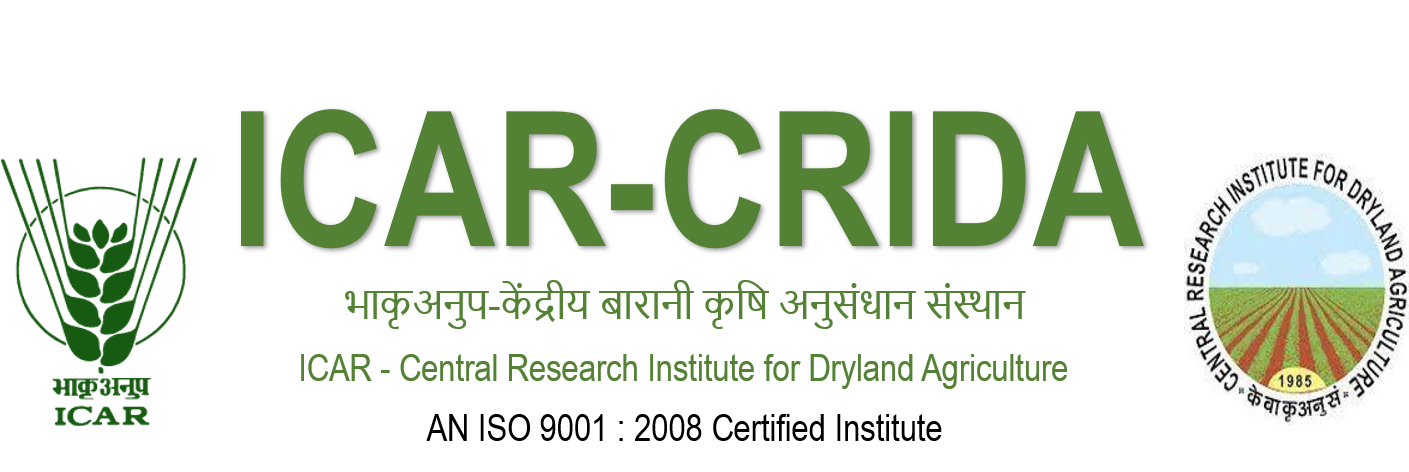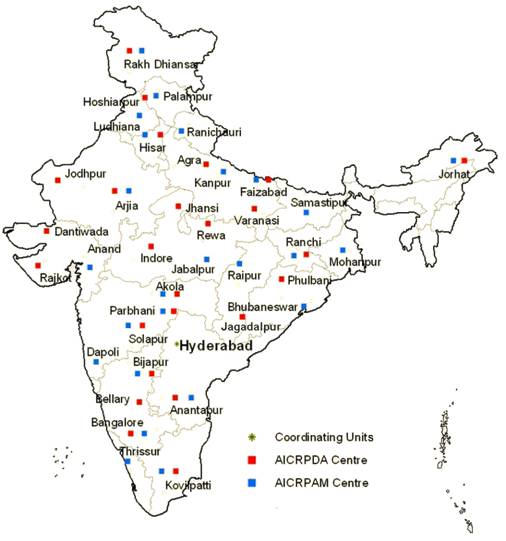
Despite realizing the full irrigation potential in the country, nearly 40% of the net sown area will remain rainfed. This sector currently produces 40% of the food grains and supports two-thirds of the livestock population. Rainfed agriculture production systems in the country are diverse and heterogeneous. The average productivity levels have moved from 0.6 tonnes in eighties to 1.1 tonnes at present. There are large yield gaps in several crops and regions between the research stations and farmer's fields. This is both an area of concern as well as an opportunity. With the productivity of irrigated crops reaching a plateau due to declining factor productivity, rainfed agriculture still offers scope for enhancing productivity by bridging the yield gaps with the currently available technologies and also raise yield potential in high rainfall zones through development of improved technologies.
From the socio-economic perspective, farmers in rainfed regions face multiple risks of weather, credit and markets and therefore the need for improving productivity and incomes is more pertinent in rainfed agriculture than irrigated farming. This is key to achieve equity and inclusive growth which are the main goals of XII Five Year Plan. While the past research has certainly resulted in improved production, particularly, in coarse cereals and oilseeds, besides contributing to natural resources conservation, there are still many challenges. The changing socio-economic dynamics and food habits, challenges like land degradation, and climate change require greater attention and increased investments in dryland agriculture. It is in this context, CRIDA needs to envision the future scenario, identify the challenges and draw up suitable R&D strategies.

Historical
The earliest attempts to improve rainfed agriculture began in the erstwhile Bombay State. During 1933-35, the then Imperial (now Indian) Council of Agricultural Research (ICAR) initiated a broad-based dry farming research project at Solapur, Bijapur, Hagari, Raichur and Rohtak to formulate appropriate strategies. After independence, renewed efforts were made to improve stability and productivity of rainfed agriculture since 1950s through developing appropriate soil and water conservation practices. ICAR gave a new impetus by launching the All India Coordinated Research Project for Dryland Agriculture (AICRPDA) in 1970, based at Hyderabad with 23 cooperating centres spread across the country beginning the era of location specific adaptive research.
Strategic Research
Realizing that the enormity and complexity of this sector requires basic and strategic research inputs, the Central Research Institute for Dryland Agriculture (CRIDA) was established at Hyderabad, on April 12, 1985 by upgrading the Project Directorate of the AICRPDA net-work. CRIDA was mandated to provide the leadership in basic and strategic research in dryland agriculture leaving the location specific problems and their solutions to AICRPDA centres. Around this time, the importance of weather and the science of Agrometeorology in agricultural production were realized after the recommendations of the National Commission on Agriculture. Therefore, to strengthen the research in Agrometeorology, the All India Coordinated Research Project on Agrometeorology (AICRPAM) was launched in 1983, also at CRIDA, Hyderabad, with 10 cooperating centres under different SAUs. The strength of AICRPDA and AICRPAM is presently 25 centres each.
While CRIDA undertakes lead research in dryland agriculture, solutions to location specific problems are generated through AICRPDA network. Further support to dryland agriculture research comes from understanding and defining the crop growth related weather parameters - a core activity of AICRPAM. CRIDA also undertakes large number of outreach programmes involving non-governmental organizations through farmers' participatory action research with a livelihoods perspective.
Powers
CRIDA is a Unit of the Indian Council of Agricultural Research (ICAR). Director of the institute shall exercise such powers for their functioning as are delegated by the Governing Body or any authority of the ICAR. Powers are delegated to the Director by ICAR.
The Director is assisted in the execution and implementation of various programmes by three Division Heads, Chief Administrative Officer, and Senior Finance & Accounts Officer. The Institute Management Committee (IMC) guides and supports the Director by periodic review of programmes and approval of investments in new areas of research programmes. The Research Advisory Committee (RAC) and Institute Research Council (IRC) provide broad guidelines and assist in developing and implementing specific research programmes and projects.
The organizational chart of the institute, provided in section (i) on "The particulars of organization, functions, and duties of the CRIDA" indicates the channels of supervision.